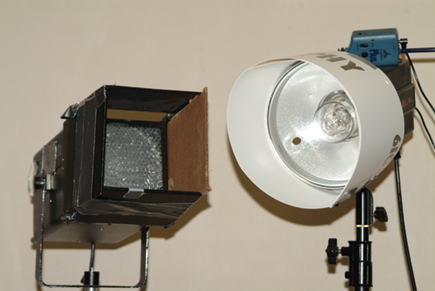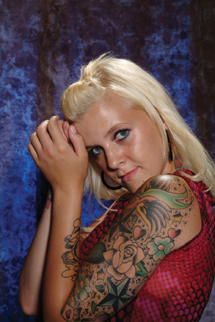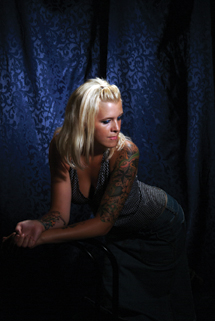Hard Light Portraits; An Island In A Sea Of Softboxes
Even though I know I look like 30 something (ahem), I've been at this game for some time. But sometimes having all those years of background (I think some people call that experience) comes in mighty handy for putting things in historical perspective. And while 30 years isn't exactly an eon in terms of the history of photography, I guess you could say I've been in photography for about 20 percent of its life! Plus, we all know, unless we've been tucked away in our safe room for the last five years, that photography has done a complete about face from film to digital in the last few years. With that as a background, let me give you a look at how lighting style has changed almost as dramatically as our medium of choice.
 |
|
|
Go into any portrait studio nowadays, mine included, and you'll probably
see big white gobs of material everywhere. Umbrella-shaped gobs on the end of
rods. Big square gobs that cover black nylon boxes. Gobs that cover PVC piping
that we stick in front of lights. It looks like someone cut up a parachute and
threw pieces of it over the front of lights. Why is everyone doing this? To
see why, let's look at the history.
I started my photographic career in the mid-1970s. Like most photographers of
the time, I wore flared pants and platform shoes, kept my "disco shirt"
unbuttoned dangerously low, had enough hair to make several sweaters, and used
parabolic light sources. Whoa, there Steve, what are you talking about? Well,
let me explain.
 |
|
|
Regular readers of my articles know I keep things pretty simple and I like to be pretty direct. Parabolic is a shape. More specifically, it's a curved shape, like the curved flank of a Ferrari GTO or the swimsuit model thrown on top of the car. Parabolic shapes are used for radio and TV satellite dishes, stock charts, Chinese woks, and, hey, photography! And while there are formulas that can figure out how much light will go in what direction, for our purposes we'll just go back to our usual formula. It goes something like this: The larger the light source in relationship to the subject, the softer the light and the more gradual the transition of highlight to shadow area. So it would make sense that the smaller the light source in relationship to the subject, the less gradual the transition of highlight to shadow area. Practically speaking, small lights will give you brilliant highlights, crisp shadow lines, and a dramatic transition from highlight to shadow area. Reverse that for big lights. With that in mind, let's go back to that decade with perhaps the worst music ever, the '70s.
 |
 |
||
|
|
































